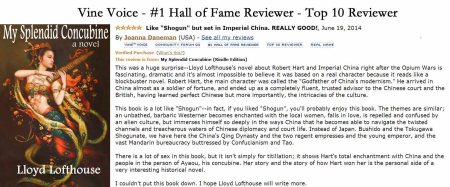According to Forbes.com, Canada is the best country in the world to be a woman, and India is the worst. The U.S. was ranked #6 of the twenty countries surveyed. The members of the G20 are Argentina, Australia, Brazil, Canada, China, France, Germany, India, Indonesia, Italy, Japan, Republic of Korea, Mexico, Russia, Saudi Arabia, South Africa, Turkey, the United Kingdom, the United States and the European Union.
Starting with the I Ching, The Book of Changes, almost five thousand years ago, the central focus of Chinese philosophy has been how to live an ideal life and how best to organize society.
When the Communist Party of China gained power in 1949, previous schools of Chinese philosophy, except Legalism, were denounced as backward and purged during the Great Leap Forward and during the insanity of Mao’s Cultural Revolution.
Most Chinese think that true advancement and growth should only happen slowly, at a steady, measured pace, which means to grow but grow slow like an oak tree while following a well thought out plan to bring about change.
Even the United States doesn’t change that fast.
In fact, it took almost ninety years to free the slaves, and women first sought the right to vote in 1848 at the Seneca Falls Woman’s Rights Convention. Then seventy-two years later in 1920, American women finally earned the right to vote when the Nineteenth Amendment was adopted by Congress and was ratified by the states becoming a national law.
The last time women had relative freedom in China was in the seventh century during the Tang Dynasty when Emperor Wu Zetian, a woman, ruled the country.
Since 1982, when China ratified its Constitution, women in China have gained more freedom, power and rights than at any other time in China’s history including the Tang Dynasty when Wu Zetian ruled as the only female emperor in China’s history.
Anyone that does not consider this progress is stupid, blind and deaf.
Critics in the West have pointed out that under the Communists, no woman has ruled China, and I’d counter that no woman has ever ruled the United States—yet.
In 2013 Lin Yandong, a senior Party official responsible for winning over non-Communists, was elected Vice Primer of China, one of the country’s senor leaders. She’s now one of China’s four vice premiers making her not only the most powerful woman in China, but also one of the most powerful in the world. She is one of two women in China’s 25-member Politburo. The other woman is Sun Chunlan.
Chinese women’s participation in politics has grown since 1982. For instance, in 1952 only 12% of China’s National Congress (NPCC) was women. In 2014, of the 2,959 seats in the NPCC, more than 23% of the seats (699) were held by women compared to about 19% in the United States Congress. Out of 190 countries, China is ranked #58 versus the U.S. that’s ranked #76. – Women in national parliaments
“Chinese women leaders have much in common. They generally all have a good education background, being mainly science majors, and solid experience in government. They are of a caliber equal to that of their male counterparts,” an All-China Women’s Federation expert said. For the United States, I’m thinking of Sarah Palin—enough said.
If you hear anyone demanding faster change in China, be cautious. After all, China seems to be moving faster than the United States when it comes to women holding positions of power.
Why do so many of China’s critics in the West expect China to move faster than the United States?
______________________________
Lloyd Lofthouse is the award-winning author of My Splendid Concubine [3rd edition]. When you love a Chinese woman, you marry her family and culture too. This is the lusty love story Sir Robert Hart did not want the world to discover.
Subscribe to “iLook China”!
Sign up for an E-mail Subscription at the top of this page, or click on the “Following” tab in the WordPress toolbar at the top of the screen.





 Posted by Lloyd Lofthouse
Posted by Lloyd Lofthouse